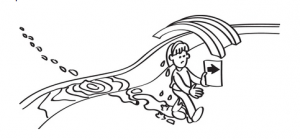Link: http://csunplugged.org/
Year Level: 1– 12
CS Unplugged is a collection of free learning activities that educate students about computer science. These engaging and interactive activities provide the educator with various resources that are downloadable.
This resource breaks down the barrier for students who do not own a computer as it provides them with an opportunity to learn computer science and programming using kinesics activities that enable students’ to physically and mentally engage with concepts and allows for discussions and collaborative learning.
The activities are set out in various categories that assist educators when selecting the link to the resources they are looking for. These key headings are:
- Data: Representing Information
- Algorithms: Putting Computers to Work
- Procedures: Telling Computers What to Do
- Intractability: Really Hard Problems
- Cryptography: Sharing Secrets
- The Human Face of Computing: Interacting with Computers
- Community Activities
Strand: Digital Technologies
Sub Strand:
– Knowledge and understanding
– Process and Production Skills
Content descriptor:
F-2:
-Recognise and explore patterns in data and represent data as pictures, symbols and diagrams (ACTDIK002)
-Follow, describe and represent a sequence of steps and decisions (algorithms) needed to solve simple problems (ACTDIP004)
3-4:
-Recognise different types of data and explore how the same data can be represented in different ways (ACTDIK008)
-Plan, create and communicate ideas and information independently and with others, applying agreed ethical and social protocols (ACTDIP013)
5-6:
-Examine the main components of common digital systems and how they may connect together to form networks to transmit data (ACTDIK014)
-Define problems in terms of data and functional requirements drawing on previously solved problems (ACTDIP017)
7-8:
-Investigate how digital systems represent text, image and audio data inbinary (ACTDIK024)
-Design the user experience of a digital system, generating, evaluating and communicating alternative designs (ACTDIP028)
Example Activity:
Programming Languages
Link: http://csunplugged.org/programming-languages/
This activity allows students to study the sequence of instructions the computer must follow and the languages that are involved in these instructions.
Students look at certain issues that arise when information is given to the device and how programming instructions can maintain the i ntended outcome.
ntended outcome.
Cross Curricular Link: English


